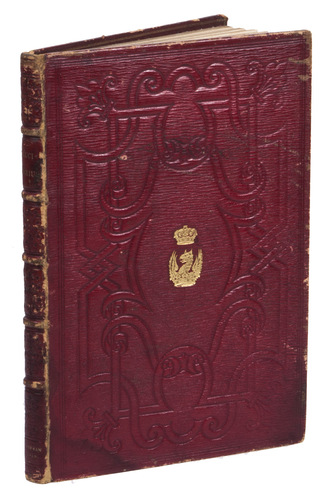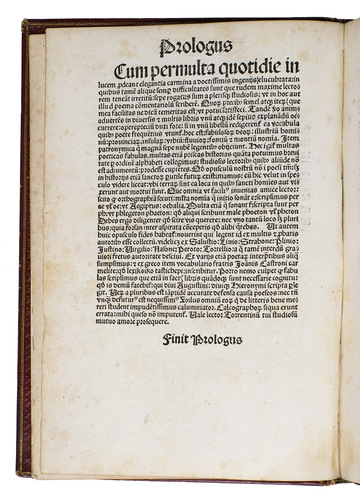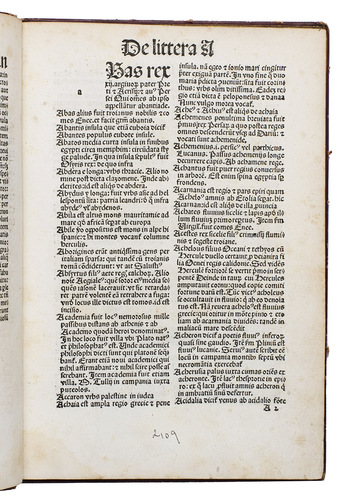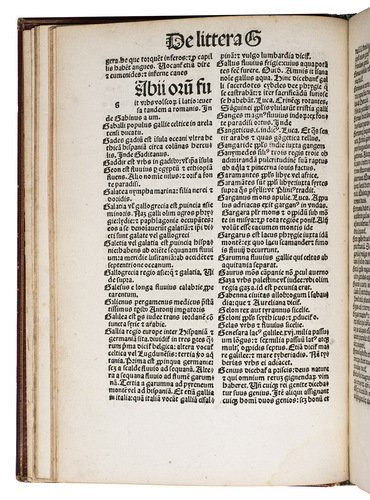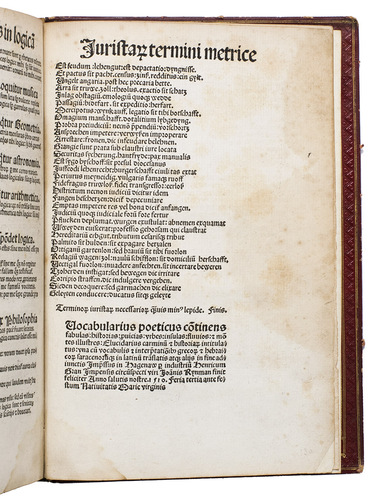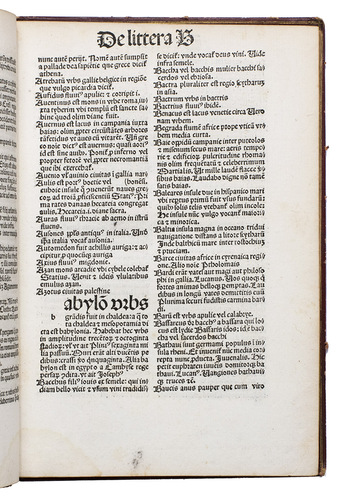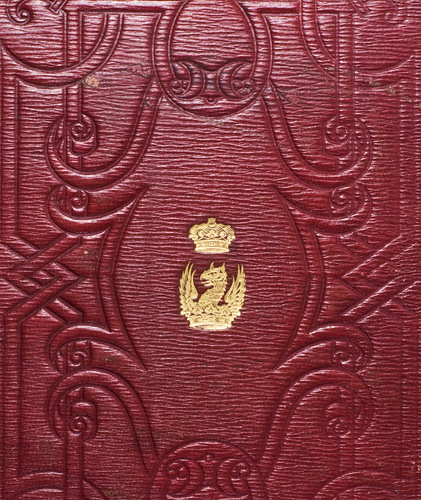TORRENTINUS, Hermannus.
Elucidarius carminu[m] et historiaru[m] vel vocabularius poeticus co[n]tine[n]s fabulas: historias: provincias: urbes: insulas: fluvios: et montes illustres.
(Colophon:) Hagenau, Heinrich Gran for Johann Rynmann, 1510. 4to. 19th-century blind-tooled red morocco, with a gold-tooled centre-piece on both sides, title, date and location of printing lettered in gold on the spine, gold- and blind-tooled broad turn-ins, gilt edges, blue endpapers. [1 blank], [60], [1 blank] ll.
€ 2,250
The first dictionary of ancient mythology, history and geography. Written by one of the foremost Latin grammatists of the 15th century, it became a very successful reference work and was in print until the 19th century. This is the first and only Hagenau edition.
The work is a Latin lexicon in alphabetical order. It contains mythological, historical and geographical names from classical antiquity, and their explanations. Including: Cleopatra, the Hesperides and Sicily. This is followed by a lexicon of Greek and Hebrew names, an interesting Latin translation of the most important words from the "language of the Saracens", and a list of Latin plants, trees and minerals, with their German translations. The data on classical geography, history, daily life and literature was taken from classical literature.
Hermannus Torrentinus (ca. 1450-1520), born as Hermann van der Beke, studied at the Latin school of Deventer and joined the Brethren of the Common Life. He was head of the Latin school in Zwolle until 1514, when he became completely blind. He has been called the foremost grammatist by his contemporaries and the majority of his works are Latin grammar books meant to be used in school. He attempted to simplify grammar for his students, but this was seen as heresy, causing him to add an "apologia" to later editions of these works. He also wrote multiple commentaries on classical authors like Ovid and Virgil. Nevertheless, Elucidarius carminum et historiarum is his most popular and well-known work.
With the bookplate of Robert Clarence Pruyn mounted on the front pastedown. The edges and hinges of the boards show some signs of wear, with a water stain around the foot of the spine and throughout in the lower margin around the gutter, some off-setting on the blue endleaves from the broad turn-ins. With mild foxing to the first and last few leaves, the lower outer corner of leaf E1 has been restored, without affecting the text. Otherwise in good condition. Adams T818 (different collation); British Museum, General catalogue, vol. 25, p. 266; GW X Sp. 6972; ISTC ih00073950 (7 copies); VD16 T 1597; Proctor 11647.
Related Subjects:








